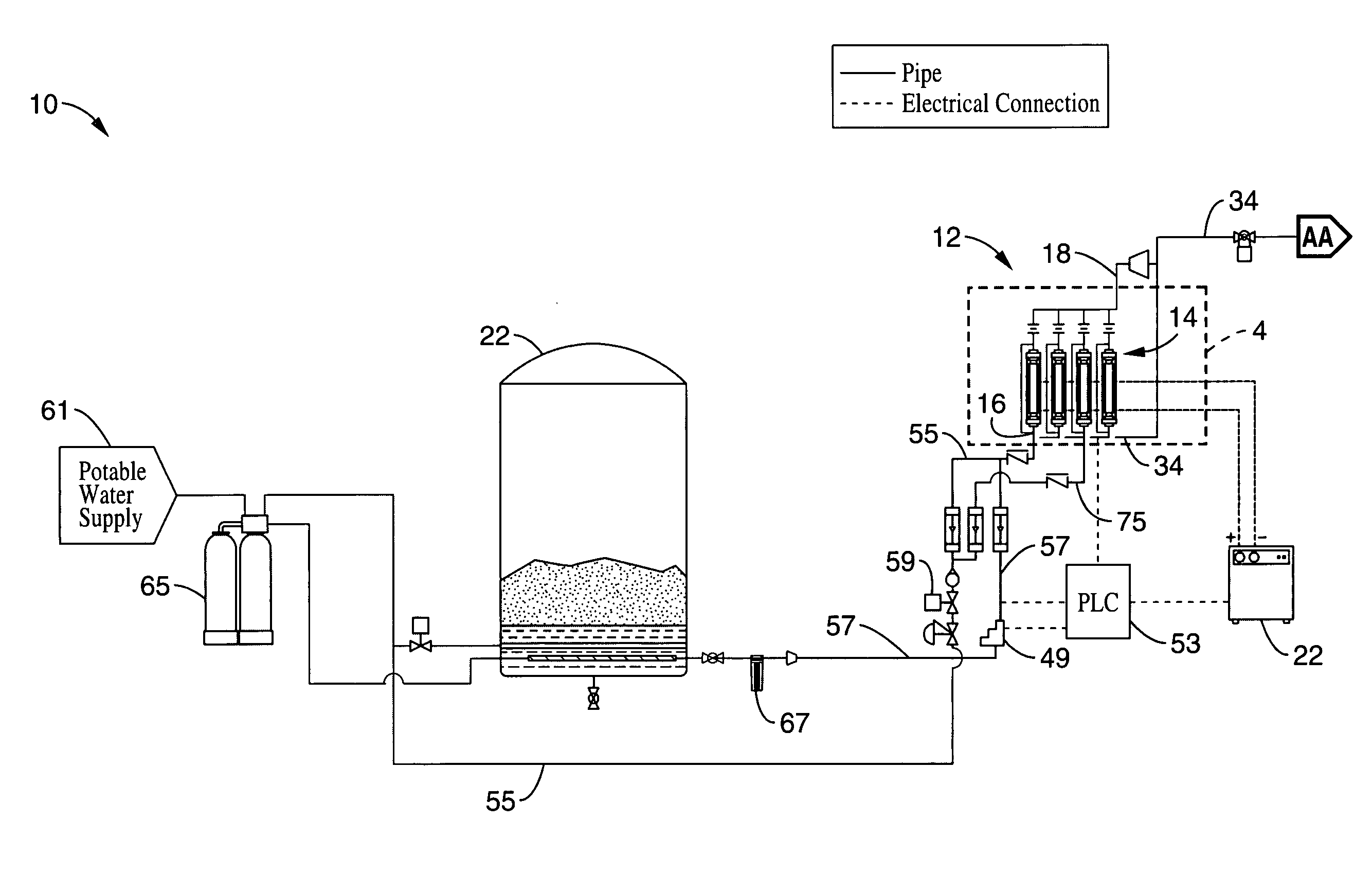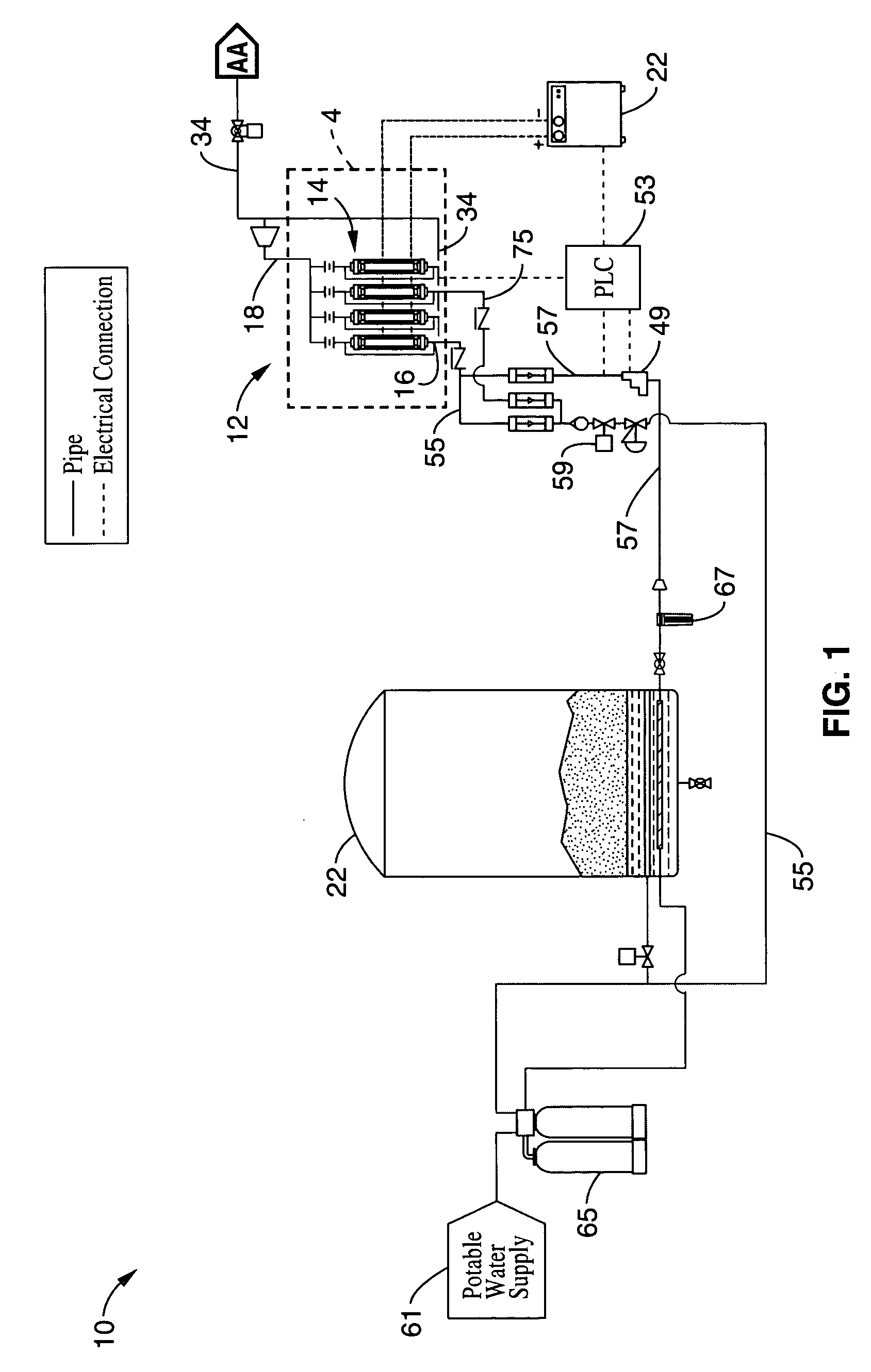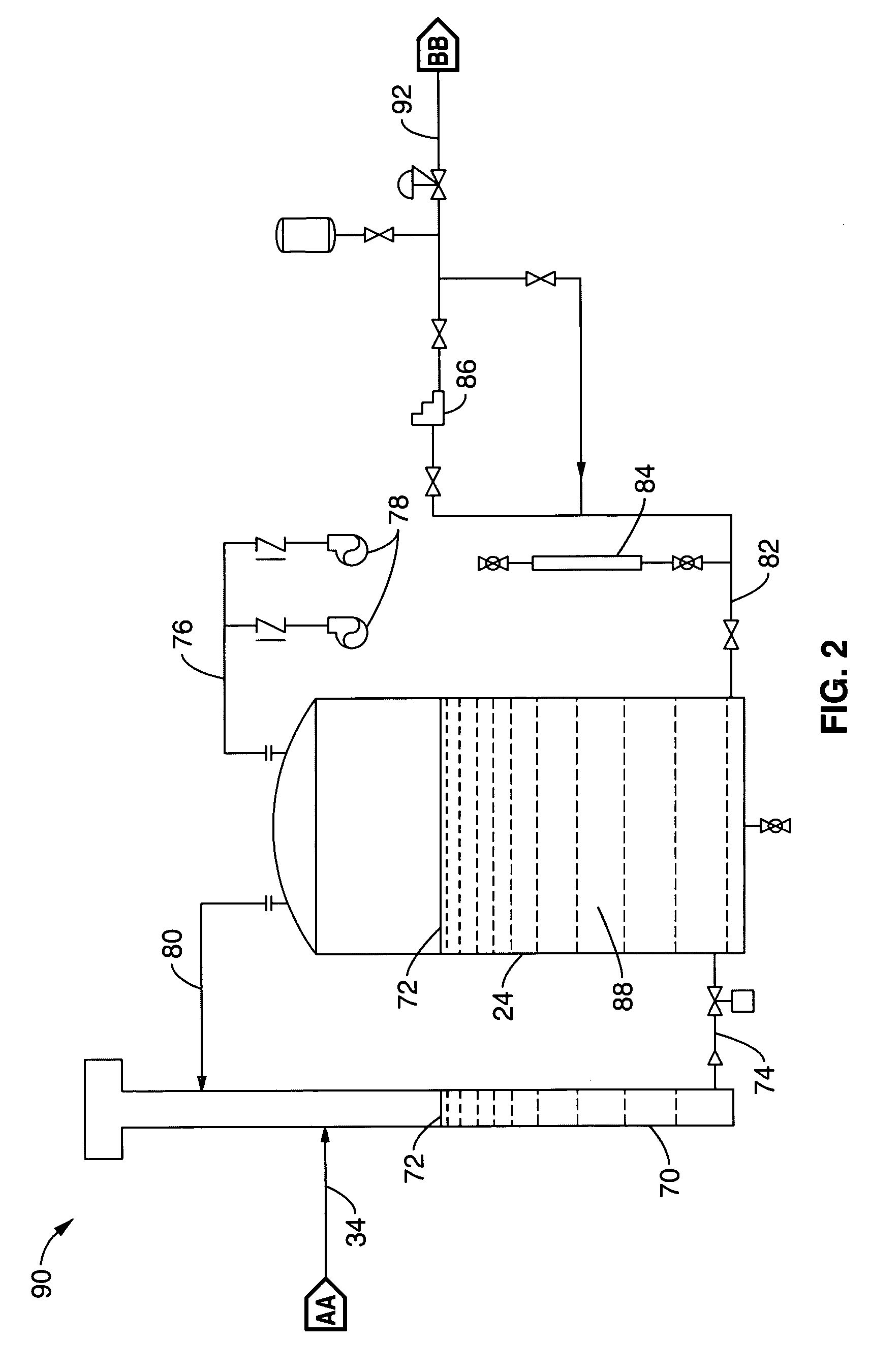Electrolytic cell and system for treating water
a technology of electrolysis cell and water treatment system, which is applied in the direction of flow mixer, chemical/physical process, energy-based wastewater treatment, etc., can solve the problems of inefficient existing system, large amount of energy, and need constant monitoring and frequent maintenance of existing chlorine generation system
- Summary
- Abstract
- Description
- Claims
- Application Information
AI Technical Summary
Benefits of technology
Problems solved by technology
Method used
Image
Examples
Embodiment Construction
[0068]Referring more specifically to the drawings, for illustrative purposes the present invention is embodied in the apparatus generally shown in FIG. 1 through FIG. 13. It will be appreciated that the apparatus may vary as to configuration and as to details of the parts, and that the method may vary as to the specific steps and sequence, without departing from the basic concepts as disclosed herein.
[0069]1. Sodium Hypochlorite Generation and Storage
[0070]Referring to FIG. 1, an on-site sodium hypochlorite system 10 is disclosed. The sodium hypochlorite system 10 is configured to produce a weak bleach solution from a base solution of ordinary salt, water and electrical power. The process typically outputs a sodium hypochlorite solution, e.g. “bleach,” having a concentration in the range of 0.8-1.0% available chlorine. As a reference, household bleach such as Clorox is typically 5-6%, while liquid pool chlorine is 12-13%.
[0071]Solar grade salt is first dissolved with water a potable...
PUM
| Property | Measurement | Unit |
|---|---|---|
| voltage | aaaaa | aaaaa |
| voltage | aaaaa | aaaaa |
| volumes | aaaaa | aaaaa |
Abstract
Description
Claims
Application Information
 Login to View More
Login to View More - R&D
- Intellectual Property
- Life Sciences
- Materials
- Tech Scout
- Unparalleled Data Quality
- Higher Quality Content
- 60% Fewer Hallucinations
Browse by: Latest US Patents, China's latest patents, Technical Efficacy Thesaurus, Application Domain, Technology Topic, Popular Technical Reports.
© 2025 PatSnap. All rights reserved.Legal|Privacy policy|Modern Slavery Act Transparency Statement|Sitemap|About US| Contact US: help@patsnap.com



